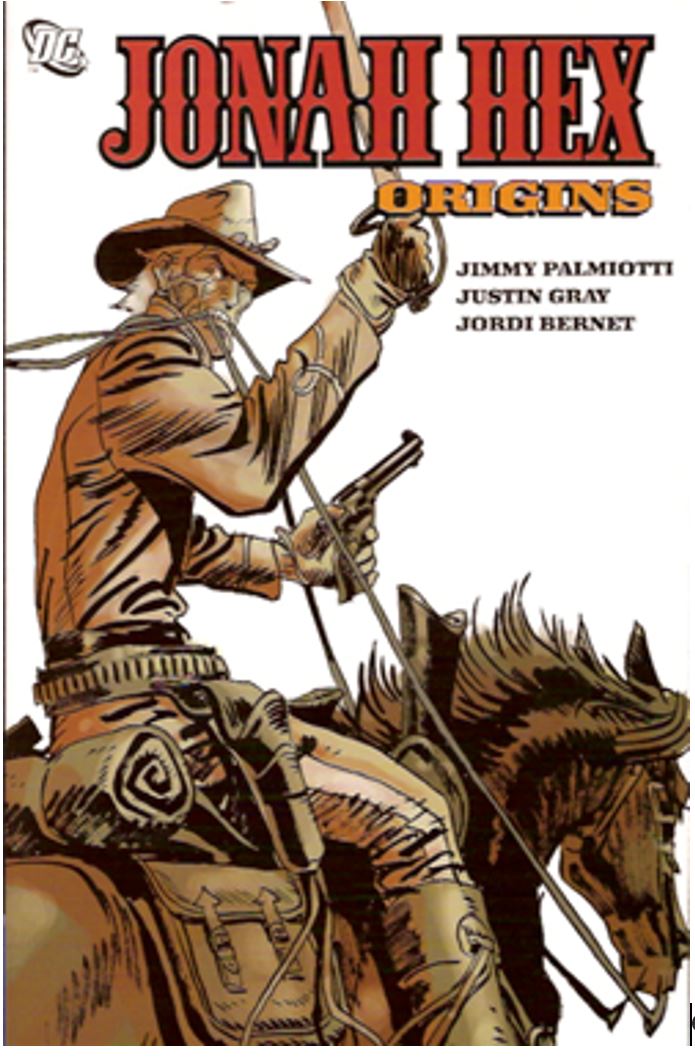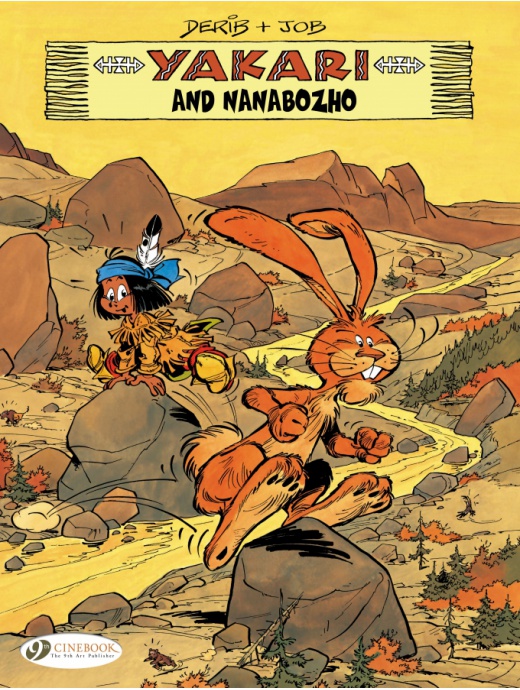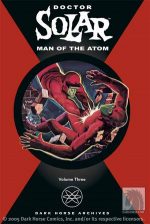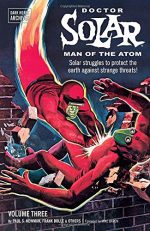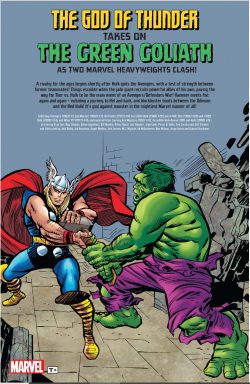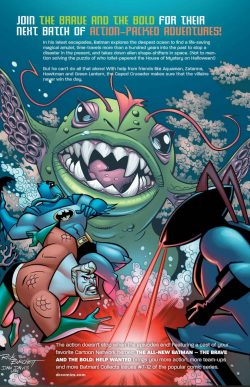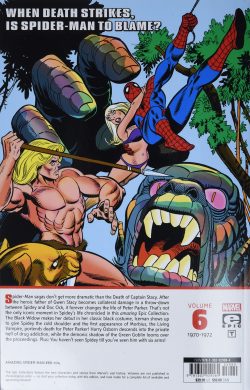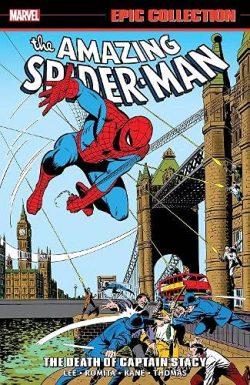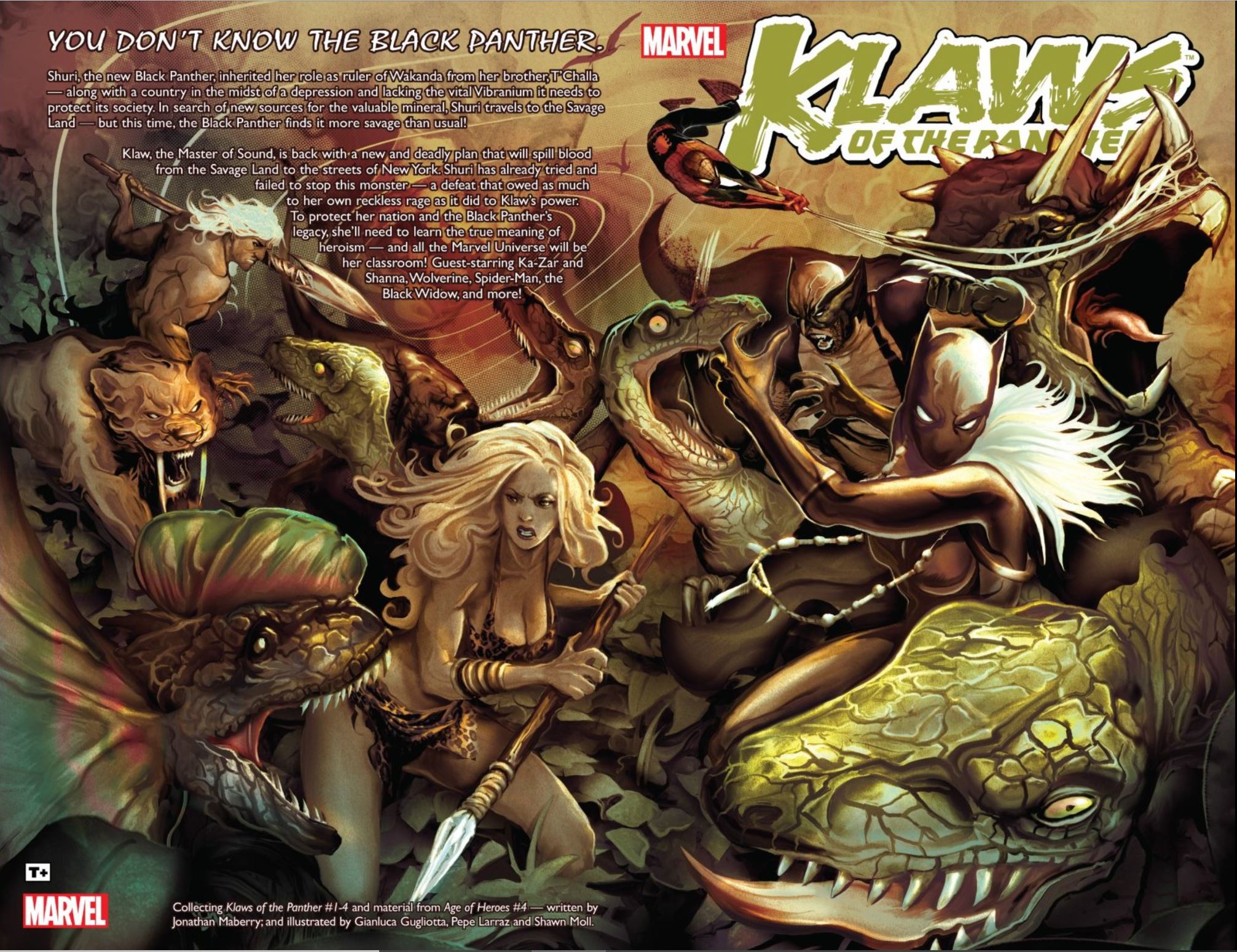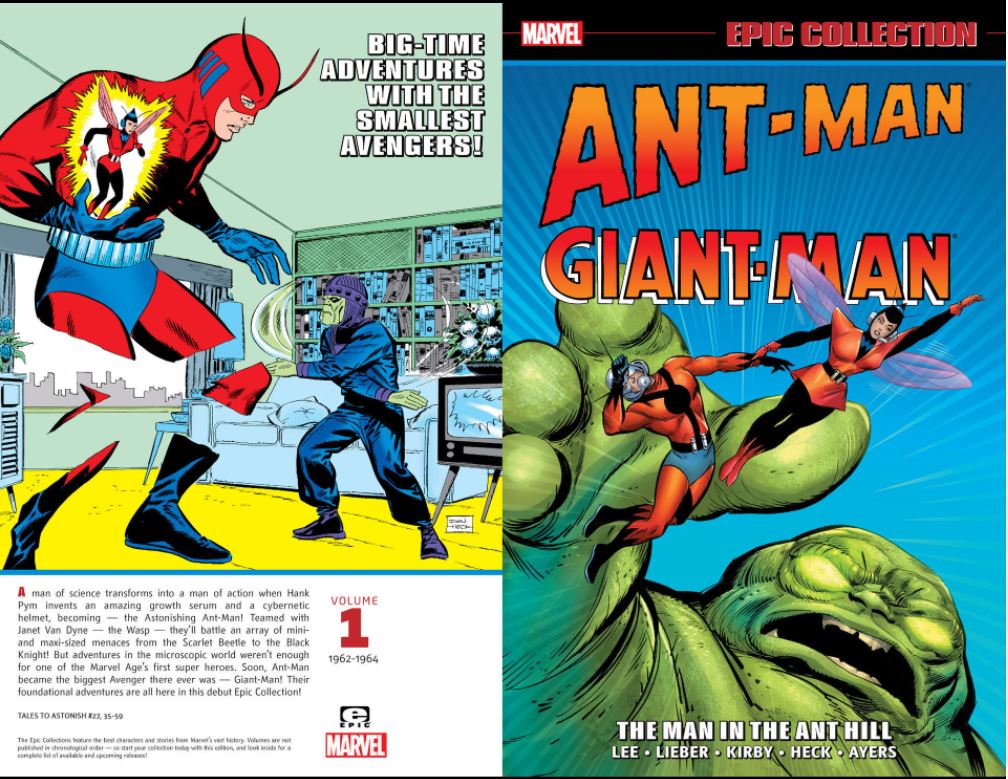
Stan Lee, Larry Lieber, Ernie Hart, Jack Kirby, Don Heck, Dick Ayers, Sol Brodsky, Steve Ditko, Paul Reinman, Chic Stone, & various (Marvel)
ISBN: 978-0-7851-9850-5 (TPB/Digital edition)Â
Dates and debuts are big deals to comics fans, and this year is a major one for Marvel Anniversaries, if not always first appearances. Here’s a classic case-in-point…Â
If you’re of a particularly picky nature – and what true fan isn’t? – you could consider The Astonishing Ant-Man to be the second superhero of the Marvel Age. He first popped up in Tales to Astonish #27 (cover-dated January 1962 but on sale from the end of September 1961), in one of the splendidly addictive men-vs-monsters anthology titles that dominated in those heady days of Science Fiction Double-Feature B-Movies.Â
This eclectic episodic, entomologically edifying and endearing compendium gathers pertinent portions of Tales to Astonish #27 and a majority of the succeeding series (which ran from #35-69: September 1962 to July 1965). Sadly the little dramas herein terminate with #59 (September 1964).Â
These itty-bitty sagas reveal scintillating solo outings of a brilliant but troubled scientist who became an unlikely, uncomfortable and ultimately mentally unstable champion, and begin with what was just supposed to be another throwaway filler thriller…Â
A cover-featured 7-page short introduced Dr Henry Pym, a maverick scientist who discovers a shrinking potion and became ‘The Man in the Anthill!’, discovering peril, wonder and even a kind of companionship amongst the lowliest creatures on Earth and under it…Â
Plotted by Stan Lee, scripted by his brother Larry Lieber and stunningly illustrated by Jack Kirby & Dick Ayers, the engaging piece of fluff owed more than a little to classic B-movie The Incredible Shrinking Man…Â
Obviously, Pym struck a chord with someone since, as the DC Comics-inspired superhero boom flourished, he was rapidly retooled as a full-fledged costumed do-gooder, debuting again mid-year (#35, cover-date September 1962) in ‘The Return of the Ant-Man’ by Lee, Lieber, Kirby & Ayers. The plot concerned a raid by Soviet agents (this was during the height of Marvel’s ‘Commie-Buster’ period when every other villain was a Red somebody or other and rampaging socialism was a cultural bête noir) with Pym imprisoned in his own lab.Â
Forced to return to the abandoned shrinking gases and cybernetic devices he’d built to communicate with ants, Dr. Pym soundly trounced the spies and resolved to use his gifts for the good of Mankind.Â
The same creative team produced the next four adventures, starting with ‘The Challenge of Comrade X!’ (TTA #36) as an infallible Soviet superspy was dispatched to destroy the Tiny Terror, after which Ant-Man was temporarily ‘Trapped by the Protector!’ – a cunning jewel-thief and extortionist who ultimately proved no match for the little wonder.Â
‘Betrayed by the Ants!’ featured the debut of intellectual archfoe Egghead: a maverick and mercenary research scientist who attempted to usurp the hero’s control of insects whilst ‘The Vengeance of the Scarlet Beetle!’ saw a return to scary monster stories as a radioactively mutated, super-smart bug sought to eradicate humanity, with only Pym able to stop him…Â
Sol Brodsky replaced Ayers as inker on ‘The Day that Ant-Man Failed!’ (TTA #40), with a deadly Hijacker robbing trucks and pushing the inventor to new heights of ingenuity, after which Kirby too moved on: his lavishly experimental perspectival flamboyance replaced by the comforting realism and enticing human scale of Don Heck who limned a classy alien invasion yarn in ‘Prisoner of the Slave World!’ before depicting a mesmerising menace who could control people with ‘The Voice of Doom’ (TTA #42).Â
The following issue H. E. Huntley (AKA veteran writer/artist Ernie Hart) replaced Lieber as scripter with ‘Versus the Mad Master of Time’: a run-of-the-mill mad – or rather disgruntled and misguided – scientist yarn. The next issue (#44) saw Kirby return to pencil a significant change to the series….Â
‘The Creature from Kosmos’ (inked by Heck) introduced The Wasp – Pym’s bon vivant crime-fighting partner Janet Van Dyne – in a double-length tale featuring a murderous alien marauder who killed her father. There was even a fresh secret origin for Ant-Man: a rare and uncharacteristic display of depth revealing Pym was a widower. When his Hungarian wife Maria was murdered by Communist agents, it irrevocably changed a young scientist from a sedentary scholar into a driven man of action….Â
Ant-Man used his discoveries to endow Janet with the power to shrink and fly and she became his crime-fighting partner. Together they overcome ‘The Terrible Traps of Egghead’ (Lee, Huntley & Heck) before travelling to Greece to thwart another alien invasion ‘When Cyclops Walks the Earth!’Â
Back in the USA, the Diminutive Duo battle mystic trumpeter Trago in ‘Music to Scream By’ and defeat an avaricious weapons designer who builds himself a unique warsuit to become super-thief ‘The Porcupine!’: all serving as placeholders before the next big change came with Tales to Astonish #49’s ‘The Birth of Giant-Man!’.Â
Lee scripted and Kirby pencilled how Pym learned to enlarge as well as reduce his size, just in time to tackle trans-dimensional kidnapper The Eraser. In the next issue Steve Ditko inked The King in ‘The Human Top’: first chapter of a continued tale which showed our hero struggling to adapt to his new strength and abilities.Â
Concluding episode ‘Showdown with the Human Top!’ was inked by Ayers who would draw the bulk of the succeeding stories until the series’ demise. Also with this issue (TTA #51) back-up feature The Wonderful Wasp Tells a Tale began; blending sci-fi vignettes narrated by the heroine, fact-features and solo adventures. The first is space thriller ‘Somewhere Waits a Wobbow!’ by Lee, Lieber & George Roussos in Marvel mode as “George Bellâ€.Â
The super-hero adventures settled into a predictable pattern from then on: individually effective enough but uninspired when read in quick succession. First up is a straight super-villain clash as ‘The Black Knight Strikes!’ (Lee & Ayers: TTA #52), supplemented by Wasp’s homily ‘Not What They Seem!’. Issue #53 led with another spectacular battle-bout ‘Trapped by the Porcupine!’ and finished with Wasp yarn ‘When Wakes the Colossus!’ (Lee, Lieber & Heck) before #54 found Heck briefly reinstated to illustrate the Crusading Couple’s catastrophic trip to South of the Border Santo Rico but finding ‘No Place to Hide!’ The taut tale of being trapped and powerless in a banana republic run by brutal commie agent El Toro was neatly counterbalanced by Wasp’s sci fi saga ‘Conquest!’ (Lee, Lieber & Brodsky).Â
An implacable former foe defeated himself in ‘On the Trail of the Human Top!’ when the psychotic killer stole Giant-Man’s size changing pills in #55, following which Lee, Lieber & Bell produced Wasp’s tale of ‘The Gypsy’s Secret!’Â
A criminal stage conjuror was far more trouble than you’d suspect in ‘The Coming of The Magician!’: even successfully abducting the Wasp before his defeat, which she celebrated by regaling readers with tall tale ‘Beware the Bog Beast!’ (Lee, Lieber & Paul Reinman) after which #57 featured a major guest-star as the size-changing sweethearts set out ‘On the Trail of the Amazing Spider-Man!’ courtesy of Lee, Ayers & Reinman, with Egghead waiting in the wings and pulling strings, before the Wasp actually enjoyed a complete solo adventure with ‘A Voice in the Dark!’ by Lee, Lieber & Chic Stone.Â
These were not only signs of the increasing interconnectivity Lee was developing but also indicated the strip was losing impetus. In a market rapidly drowning in superheroes, Giant Man was not selling as well as he used to or should…Â
Captain America cameo-ed in #58’s epic Africa-based battle with a giant alien in ‘The Coming of Colossus!’, supplemented by Wasp’s lone hand played against an old foe in ‘The Magician and the Maiden!’Â
The last tale in this collection and beginning of the end for Giant-Man came in Tales to Astonish #59 and ‘Enter: the Hulk!’ with the Avengers inadvertently prompting the Master of Many Sizes to hunt down the Green Goliath. Although Human Top orchestrated a blockbusting battle, Lee was the real mastermind since, with the next issue, The Hulk would co-star in his own series and on the covers whilst Giant-Man’s adventures shrank back to a dozen or so pages. Ten issues later Hank and Jan would retire, making way for amphibian antihero Namor, the Sub-Mariner…Â
(Gi)-Ant-Man and the Wasp did not die, but instead joined a vast cast of characters Marvel kept in relatively constant play through team books, via guest shots and in occasional re-launches and mini-series.Â
Despite variable quality and treatment, the eclectic, eccentric and always fun exploits of Marvel’s premier “odd couple†remain an intriguing and engaging reminder that the House of Ideas didn’t always get it right, but generally gave their all to entertaining their fans.Â
Marvel Comics initially built its fervent fan base through strong and contemporarily relevant stories and striking art, but most importantly by creating a shared continuity that closely followed the characters through not just their own titles but also through the many guest appearances in other comics. Such an interweaving meant that even today completists and fans seek out extraneous stories to get a fuller picture of their favourite’s adventures.Â
In such an environment, series like these Epic Collections are an economical and valuable commodity approaching the status of a public service for collectors. Â
By turns superb, stupid, exciting and appalling, this Epic encounter epitomises the best and worst of Early Marvel (with the delightful far outweighing the duff). It certainly won’t appeal to everybody, but if you’re a Fights ‘n’ Tights fan with a forgiving nature or a movie-goer looking for extra input, the good stuff here will charm, amaze and enthral you whilst the rest could just be considered as a garish garnish providing added flavour…
© 1962, 1963, 1964, 2015 Marvel Characters, Inc. All rights reserved.Â

